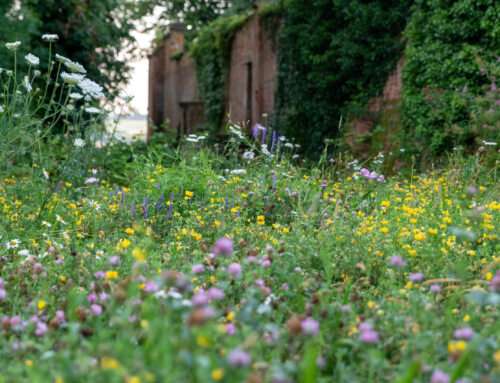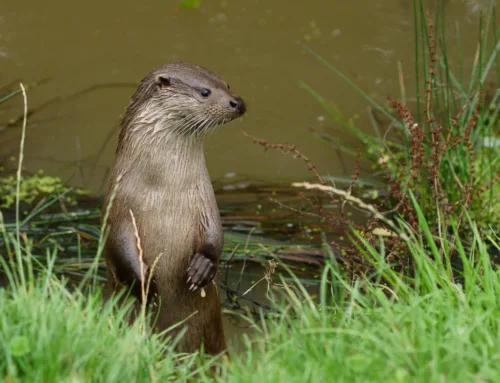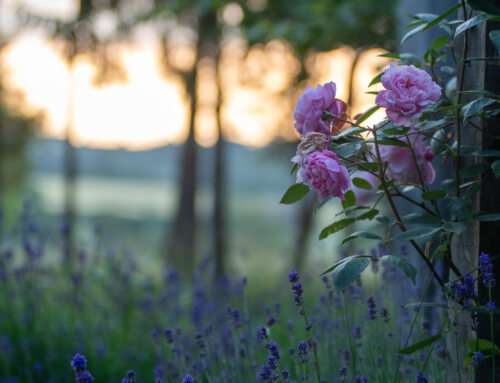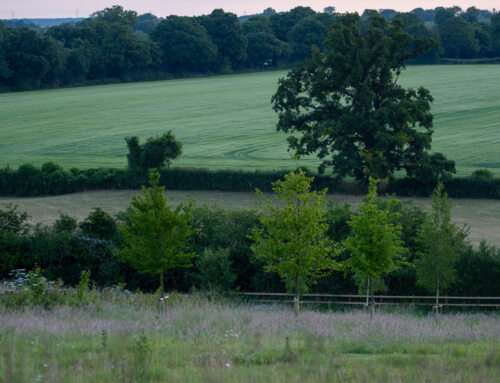Modern-Day Forestry: Managing Deer Populations
The UK is home to six wild species of deer, of which only two are native; the iconic red deer and the illusive roe. The remaining four species (fallow, Chinese water deer, muntjac and sika) were introduced to this country primarily for sport hunting. Since the Norman conquest of 1066, the UK countryside has been shaped through the creation of beautiful estates and their accompanying stately homes. Many gave space for the deer park.
As is often the case with private collections, there were inevitable escapees, which successfully established and expanded. With the absence of any natural predators and massive changes in land use, wild deer numbers are now expected to be at their highest in the last 1000 years. With these significant numbers comes severe pressure on our native habitats, which modern-day woodland managers, farmers and other professionals who work alongside nature are in a continual battle to mitigate.

By Harry Poole, Assistant Woodland Manager
Why do we manage wild deer populations?
Deer are an important species for promoting biodiversity in our native woodlands; they help to control noxious weed growth, maintain light levels in certain areas to promote rare woodland ground flora and their carcasses are crucial for a wide range of microfauna and localised soil health. When in balance, they are an integral part of a healthy ecosystem, as are most large herbivores. They are also of value both culturally and economically, with tourism and sporting interests being a key driver for rural economies. However, these animals can become devastating in large numbers, not only to the wider ecosystem but also to themselves.
As a large prey species, deer tend to breed more than is required to maintain their numbers, anticipating losses to predation, disease and starvation. In the UK, with the absence of predators due to hunting and loss of habitat, such growth in deer populations can only be sustained through locating new habitats and food sources, something that is no longer available to wild deer herds. As a result, wild deer populations are coming into increasing contact with livestock to access suitable forage, with the risk of disease spread between the wild animals and livestock becoming a cause for concern. Deer are known vectors for various diseases including bovine tuberculosis, which as we all know can have devastating impacts on cattle farmers – if the density of local deer populations is not effectively controlled, the greater the risk posed to the UK cattle market. In addition, the risk to the wild deer populations themselves has increased dramatically, as diseases are far more likely to proliferate quickly through a dense and potentially unhealthy population as opposed to a genetically diverse, healthy and spread-out population.
With such a high density of deer, localised damage to crops and woodland habitats has dramatically increased in recent years. Deer can severely restrict the natural regeneration of young trees and ground flora through over-browsing, as well as damaging more established specimens through hard browsing and bark fraying. With this level of damage comes a range of negative ecological impacts, particularly the reduction in rare ancient woodland ground flora that many native pollinator species have evolved alongside and are reliant on. It is known that bluebells, dog’s mercury, early purple orchids and wood anemones are all favourites of muntjac and are regularly browsed when deer numbers are not controlled; woodland shrubs, which often offer the most suitable habitat and food sources for invertebrates and birds, are typically the first to succumb to deer damage alongside ground flora resulting in a simplified vegetation structure in our woodlands with poor mid-canopy diversity.

Clear and evident browse line from local deer pressure – the absence of any ground flora and natural regeneration is stark as well.
From the landowner’s point of view, these threats can have a severe economic impact. Some farmers that were surveyed by the Forestry Commission in 2022 reported losses of more than £1 million per annum through overgrazing of crops and damage to trees; this has a negative knock-on effect, as this money cannot be invested back into positive habitat management. In some instances, browsing damage and fraying can reduce final timber value by as much as 50%, a huge loss to absorb for the landowner. Given that the UK is the second biggest global importer of timber produce, deer are having an unwelcome impact.

Severe bark fraying damage to a young 4-year-old tree.

Deer exclosure plot in some recently thinned woodland – this helps to highlight the difference in understorey development and regeneration when deer are controlled.
Deer control in the UK
With the absence of natural predators in the UK, it falls to people to manage the ever-growing wild deer population. This is done with the utmost care and precision, with accurate cull records and reports being a prerequisite of any effective deer management plan for an estate. Stalkers aim to always cull with respect for the animal and with a focus on best practice, as outlined in the Deer Act 1991; a comprehensive legal document protecting deer and ensuring that the highest standards are upheld when undertaking active management. Deer management always focuses on methods to ensure deer populations remain healthy and in balance with their environment.
There have been some efforts to control wild deer populations through “humane” efforts, primarily contraception. However, the difficulties surrounding monitoring and targeted regular administering of contraceptives make this approach largely impractical outside of enclosed deer parks and collections. For now, well-managed shooting and deer fencing are the only surefire ways to control deer populations. There have been improvements made in recent years to increase cooperation between estates and larger land holdings, with shoot syndicates and private companies now offering comprehensive deer management plans and cull programmes. This is a step in the right direction, but with the number of registered deer stalking licences dropping for the first time in 20 years and an ageing population of registered and competent stalkers, we run the risk of continued unsustainable damage for years to come. Incentivising new training for school leavers and young professionals, driving UK venison products to more accessible markets and continued outreach and education on deer culling, not to mention legislation, are important ways to get this situation under effective, nationwide control.

Stalking is currently the most effective way of controlling wild deer population growth and is of profound importance to both the UK forestry and agriculture industries.
This is not to say that we as woodland managers want to eradicate deer from our countryside – that is far from the truth. We both recognise and respect the positive roles that deer play in our woodlands and wider countryside and appreciate the cultural value that they hold. However, the pressures that we are seeing currently, through no fault of the deer, are wholly unsustainable. The only way to sustainably control wild deer pressures is by cultivating a wide-reaching, landscape-level change in attitude toward how we manage them. If we are to have any hope of meeting the government’s targets in reversing native ecological loss, increasing the number of trees we plant and securing our home-grown timber industry for future generations, deer control is imperative.






